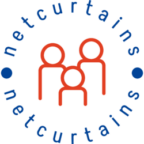In today’s increasingly digital world, it is essential to teach children digital literacy from an early age. As technology continues to shape the way we live, work, and interact, children must understand how to navigate the digital landscape safely, responsibly, and effectively. Digital literacy goes beyond basic technical skills; it involves a deeper understanding of how to use technology for communication, problem-solving, creativity, and critical thinking. By instilling these skills early, parents can empower their children to thrive in an ever-changing, tech-driven environment.
What is Digital Literacy?
Digital literacy encompasses a broad set of skills and knowledge that enable individuals to use digital devices, software, and the internet competently. It includes the ability to find, evaluate, and share information online, communicate effectively through digital platforms, understand digital ethics and privacy, and think critically about the content they encounter.
For children, learning these skills early is especially important, as they are growing up in a world where digital tools and platforms are an integral part of their everyday lives. From educational apps and online games to social media and virtual classrooms, technology plays a role in nearly every aspect of their development. Teaching digital literacy ensures that children can navigate these platforms safely and harness their potential for learning and creativity.
Early Exposure to Technology
Many children are exposed to digital devices at a young age. Tablets, smartphones, and computers are often used to entertain, educate, or even babysit children. While this early exposure can be beneficial, it also underscores the importance of teaching digital literacy alongside the use of these devices.
Early exposure without guidance can leave children vulnerable to online risks such as inappropriate content, cyberbullying, and privacy violations. On the other hand, with proper instruction, children can learn to make informed decisions, develop healthy online habits, and use technology as a tool for education and exploration rather than a source of harm.
Building Critical Thinking Skills
One of the most important aspects of digital literacy is the development of critical thinking skills. In a world saturated with information, it can be challenging for both children and adults to distinguish between reliable sources and misinformation. Teaching children how to critically evaluate the information they encounter online helps them become discerning consumers of media.
This skill is essential as children grow older and begin using the internet for research, social interactions, and self-expression. By teaching them how to verify sources, check facts, and recognize bias, parents can equip their children with the tools they need to navigate the digital world responsibly. This, in turn, fosters a more informed and thoughtful generation capable of contributing positively to the digital landscape.
Enhancing Communication Skills
Digital literacy is also closely tied to communication. With the rise of social media, instant messaging, and video conferencing, children today have unprecedented access to various digital communication platforms. While these tools provide incredible opportunities to connect with others, they also require a new set of communication skills.

Teaching children how to communicate effectively online involves more than just typing out messages or posting photos. It’s about understanding digital etiquette, recognizing the permanence of online interactions, and considering how their words and actions affect others. Digital literacy encourages children to communicate respectfully and thoughtfully in online spaces, reducing the likelihood of engaging in or falling victim to cyberbullying or harmful behavior.
Moreover, learning to communicate through digital platforms prepares children for the future workforce, where remote collaboration, digital presentations, and virtual meetings are becoming more common. By mastering these tools early, children will be better equipped to succeed in both academic and professional settings.
Encouraging Creativity and Innovation
The digital world is not just a place for consuming content; it is also a platform for creation. Digital literacy enables children to go beyond passive engagement and use technology as a medium for creativity and innovation. Whether it’s coding a game, designing a website, editing videos, or producing digital art, digital literacy provides children with the skills to express themselves and create new opportunities.
Encouraging children to explore digital tools for creative purposes helps them develop problem-solving skills and fosters a sense of curiosity and experimentation. It allows them to take control of their digital experience, transforming them from passive users to active creators. This can be especially empowering for children, as it builds confidence and helps them realize their potential in a tech-driven world.
Promoting Online Safety and Privacy Awareness
As children navigate the digital world, online safety becomes a paramount concern. Teaching digital literacy from an early age helps children understand the importance of protecting their personal information and maintaining privacy online. Children need to learn about the risks associated with sharing too much information, such as identity theft, scams, and even predatory behavior.
Parents play a crucial role in teaching children about privacy settings, safe online behavior, and the importance of creating strong, unique passwords. Additionally, children should be taught to recognize and avoid phishing scams, malware, and other online threats. Understanding these aspects of online safety is essential for protecting children from the potential dangers of the digital world.
Moreover, digital literacy involves teaching children about the concept of a digital footprint—the trail of data they leave behind when they use the internet. By making children aware of the long-term impact of their online actions, parents can help them make responsible decisions and understand the consequences of their digital behavior.
Preparing for the Future
As technology continues to evolve, the demand for digital skills in the workforce is growing. Many of today’s jobs require a high level of digital literacy, and this trend is only expected to increase. By teaching children digital literacy early, parents are preparing them for future careers that will undoubtedly rely on technological proficiency.

Children who are comfortable with technology from a young age are more likely to adapt to new tools and platforms as they emerge. They will be better equipped to take advantage of opportunities in fields such as computer science, digital marketing, artificial intelligence, and other technology-driven industries.
The Future of a Digital World
In an increasingly digital world, teaching your child digital literacy as early as possible is not just a choice—it’s a necessity. By fostering critical thinking, enhancing communication skills, encouraging creativity, and promoting online safety, parents can ensure their children grow into responsible, informed, and capable digital citizens. Digital literacy empowers children to navigate the complexities of the digital world with confidence, preparing them for success in both their personal and professional lives.

